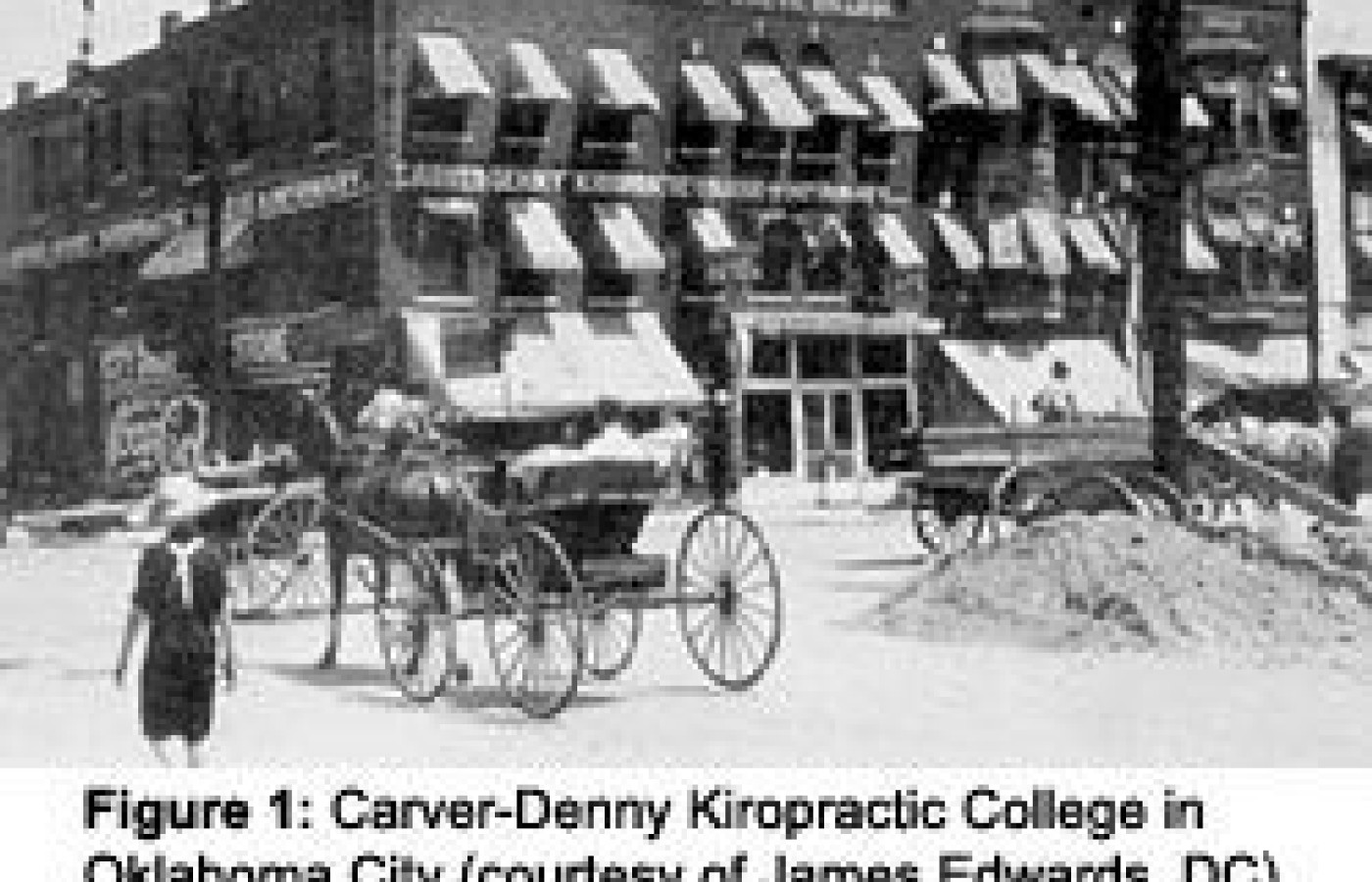New York's highest court of appeals has held that no-fault insurers cannot deny no-fault benefits where they unilaterally determine that a provider has committed misconduct based upon alleged fraudulent conduct. The Court held that this authority belongs solely to state regulators, specifically New York's Board of Regents, which oversees professional licensing and discipline. This follows a similar recent ruling in Florida reported in this publication.
100 Years Ago in Chiropractic

All in all, 1907 was a good year for chiropractors. In Davenport, Iowa, enrollment at the Palmer School of Chiropractic (PSC) was growing, from four students in 1902 when B.J. Palmer, DC, took charge as manager to 96 students in 1907.5 The PSC's alumni were spreading out around the nation and the globe. Some were practicing and some also were teaching, so as to doubly spread the new health concept. (See Table 1.) Charles Ray Parker, DC, graduated from PSC in 1905, and promptly opened a school in Ottumwa, Iowa. The Parker School had graduated Willard Carver, LLB, DC, and L.L. Denny, DC, and these two were now operating the Carver-Denny Kiropractic College and Infirmary in Oklahoma City.1,4 Among Carver's earliest students was Tullius de Florence Ratledge, who took his degree in 1907. Dr. Ratledge is best remembered as the founder, in 1911, of what is today the Cleveland Chiropractic College of Los Angeles.7
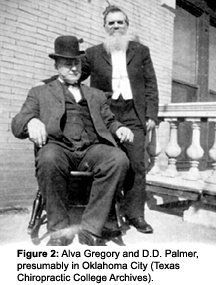
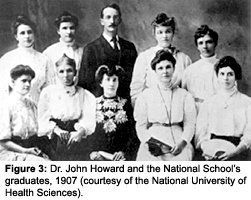
B.J. Palmer had competition in chiropractic's hometown. In 1906, another Palmer alumnus, John F.A. Howard, DC, opened the National School of Chiropractic (today's National University of Health Sciences in Lombard, Ill.). In 1908, Howard would move the tiny institution to Chicago, where a greater volume of patients, students and cadavers were available. In the short term, Howard was a competitor for the PSC's potential student pool.
By 1905, two chiropractic schools bore similar names: the American School of Chiropractic & Nature Cure founded in Cedar Rapids, Iowa, and the American School of Chiropractic (ASC) in New York City. The former had been founded by 1901 Palmer graduate Solon Massey Langworthy, DC,2,5 perhaps the first chiropractor to be accused of "mixing." Langworthy's school was already fading from the scene by 1907, but Benedict Lust, MD, DC, who operated the ASC alongside his American School of Naturopathy,10 would take broad-scope chiropractic into areas that infuriated the "straight" chiropractic wing of the profession.
Table 1: Several early schools of chiropractic, 1896-1908
|

|
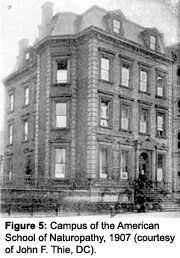
|

The most significant event for chiropractors in 1907 was the acquittal of 1906 Palmer alumnus Shegetaro Morikubo, DC.5,11 A graduate also in philosophy from a university in Tokyo, Morikubo was a student at the PSC during D.D. Palmer's trial and jailing in Scott County in March and April 1906. Later that year, after award of his DC, Morikubo joined Dr. B.J. Palmer and more than a dozen other Palmer alumni to establish the longest-lasting legal protective society of chiropractors: the Universal Chiropractors Association (UCA). (The UCA is the earliest forerunner of both today's American Chiropractic Association/ACA and the National Chiropractic Mutual Insurance Company/NCMIC.) When Morikubo was arrested in 1907 for unlicensed practice in LaCrosse, Wis., the UCA's secretary, B.J. Palmer, hired state Senator Tom Morris to defend the young doctor. Morris (future lieutenant governor of Wisconsin) persuaded the district attorney to drop the charges of practicing medicine and surgery without a license, since Morikubo had neither given drugs nor performed surgery. Instead, Morikubo was tried for practicing osteopathy without a license.

To make the case for the Japanese-American doctor (whose race was an issue), Morris called expert witnesses to the stand who held both chiropractic and osteopathic diplomas. The experts testified that chiropractic and osteopathy had "separate and distinct" philosophies and modes of practice. Osteopaths, it was erroneously claimed, were only interested in the "rule of the artery" (i.e., the circulation) and chiropractors were only concerned with the role of the nervous system in health and illness. Their assertions were supplemented by the wording of an early text, Modernized Chiropractic,12 which reaffirmed the unique "philosophy" of chiropractic. The jury took less than 30 minutes to decide that Dr. Morikubo was not guilty of practicing osteopathy when he practiced chiropractic. It was the first major legal victory for the profession.
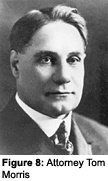
The chiropractic profession saw the continuing proliferation in 1907. As well, it marked a turning point in the fortunes and outlook for chiropractors, who had previously known only defeat when political medicine drew upon the police powers of the state in its efforts to contain and eliminate the younger profession. It was a time to remember.

The AHC publishes a scholarly journal, Chiropractic History, in which chiropractors and interested observers contribute their expertise to telling and interpreting the rich lore of the profession. Published twice per year, Chiropractic History is distributed to all members of the AHC as a membership benefit. Membership in the AHC can be obtained by sending your name, address and check for $75 ($30/year for students) to the AHC's executive director:
Glenda Wiese, Ph.D.,
Executive Director
Association for
the History of Chiropractic
1000 Brady Street,
Davenport IA 52803 USA
References
- Gallaher H. History of Chiropractic. Guthrie, OK: Co-operative Publishing Co., 1930.
- Gibbons RW. Solon Massey Langworthy: Keeper of the flame during the "lost years" of chiropractic. Chiropractic History, 1981;1:14-21.
- Gielow V. Old Dad Chiro: A Biography of D.D. Palmer, Founder of Chiropractic. Davenport, IA: Bawden Brothers, 1981.
- Jackson RB. Willard Carver, LL B, DC, 1866-1943: doctor, lawyer, Indian chief, prisoner and more. Chiropractic History, Dec. 1994;14(2):12-20.
- Keating JC. B.J. of Davenport: The Early Years of Chiropractic. Davenport, IA: Association for the History of Chiropractic, 1997.
- Keating JC. Early chiropractic education in Oregon. Journal of the Canadian Chiropractic Association, March 2002;46(1):39-60.
- Keating JC, Brown RA, Smallie P. Tullius de Florence Ratledge: The missionary of straight chiropractic in California. Chiropractic History, Dec. 1991;11(2):26-38.
- Keating JC, Phillips RB, Eds.: A History of Los Angeles College of Chiropractic. Whittier, CA: Southern California University of Health Sciences, 2001.
- Keating JC, Sportelli L, Siordia L. We Take Care of Our Own: NCMIC and the Story of Malpractice Insurance in Chiropractic. Clive, IA: NCMIC Group, Inc., 2004.
- Lust B. Universal naturopathic encyclopedia, directory and buyer's guide: year book of drugless therapy. New York, 1918.
- Rehm WS. Legally defensible: chiropractic in the courtroom and after, 1907. Chiropractic History, 1986;6:50-5.
- Smith OG, Langworthy SM, Paxson M. Modernized Chiropractic. Cedar Rapids, IA: Laurance Press, 1906.
